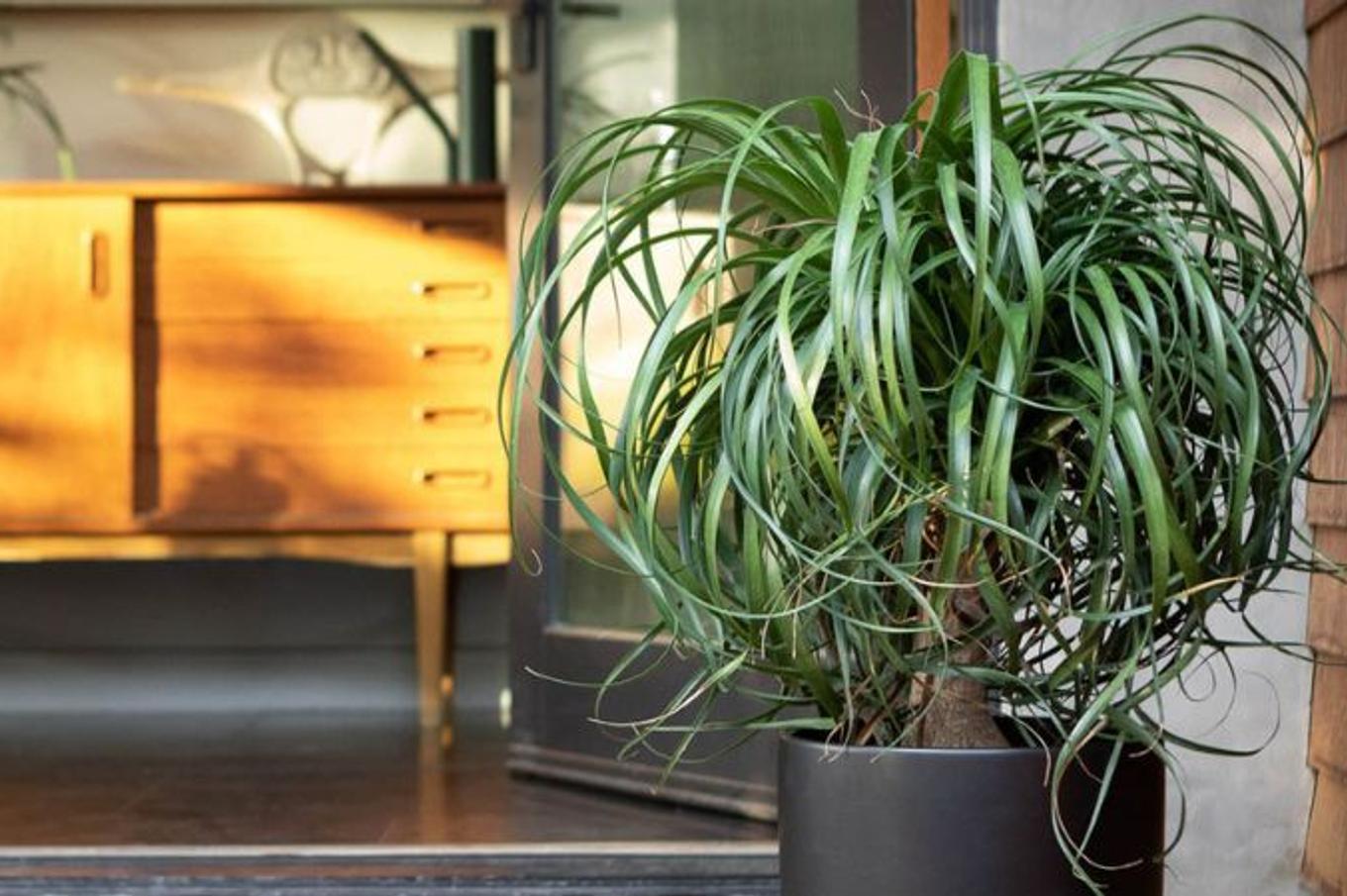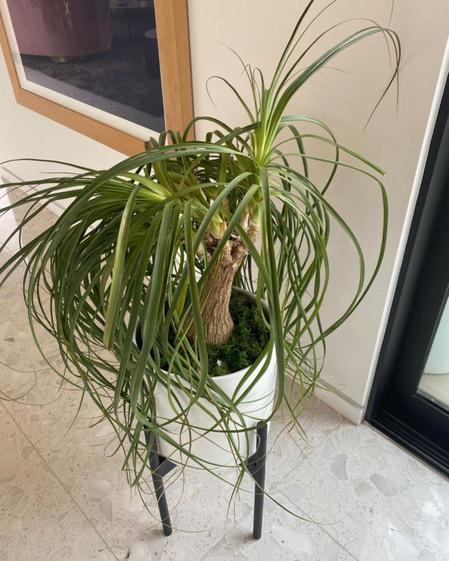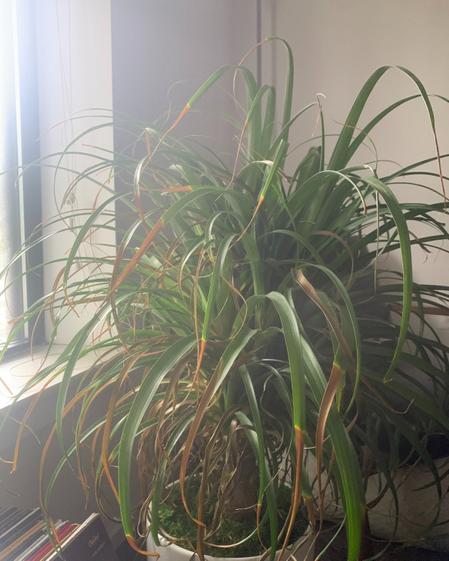Ponytail Palm Care Guide

With its distinctive bulbous trunk and wispy, cascading leaves, the Ponytail Palm (Beaucarnea recurvata) is a playful yet elegant addition to any indoor plant collection. Despite its tropical look, this hardy plant is actually a succulent, making it remarkably drought-tolerant and easy to care for. Keep reading for simple care tips to help your Ponytail Palm flourish.
Simple Care Instructions for the Ponytail Palm
Light Requirements
Ponytail Palms thrive in bright, indirect light and can also tolerate some direct sunlight. They can adapt to lower light levels, but their growth will slow and their leaves may become less vibrant. For best results, place your Ponytail near a sunny window where it can soak up plenty of light.
Watering Needs
This plant stores water in its thick, bulbous trunk, making it very drought-tolerant. Water your Ponytail Palm sparingly, allowing the soil to dry out completely between waterings. Overwatering is a common problem, so it’s better to underwater than overwater. Typically, watering every 2–3 weeks is sufficient, but this varies based on your home’s humidity and temperature.
If you’re unsure, check the top 2 inches of soil; if it feels dry, it’s time to water. Consider using a moisture meter for additional watering support.
Humidity and Temperature
Ponytail Palms prefer average indoor humidity and do well in normal household conditions without extra misting. They like temperatures between 60–80°F (16–27°C) and should be kept away from cold drafts or sudden temperature changes.
Soil and Fertilizing
Use a well-draining succulent or cactus potting mix that prevents water retention around the roots. Good drainage is essential to prevent root rot.
Feed your Ponytail Palm with a balanced liquid fertilizer once a month*during the spring and summer growing season.
Common Problems and Troubleshooting Tips
Yellowing Leaves – Overwatering
Symptoms: Lower leaves turning yellow and soft.
Cause: Excess water causing root rot.
Solution: Cut back watering immediately and check drainage. If root rot is suspected, remove the plant from its pot, trim damaged roots, and repot in fresh, well-draining soil.
Leaf Browning or Crispy Tips – Underwatering or Low Humidity
Symptoms: Brown leaf tips or edges that feel dry and crispy.
Cause: Lack of water or dry indoor air.
Solution: Water more regularly but avoid overwatering. Increasing humidity or placing the plant near other plants can help, but misting is usually unnecessary.
Not Growing – Low Light or Dormancy
Symptoms: Plant stops growing.
Cause: Insufficient light or natural seasonal dormancy.
Solution: Slow growth during fall and winter is normal. If your plant doesn't grow at all throughout the year, move it to a brighter spot if possible.

An overwatered Ponytail Palm.

Brown tips could be lack of humidity/underwatering.
Seasonal Care Tips
Ponytail Palms are naturally slow growers and often stop growing altogether during the winter. Reduce watering and skip fertilizing during this time. In spring and summer, your plant may produce new leaves from its tuft — a sign it’s happy and healthy!
Pro tip: The swollen trunk isn’t just for show — it’s your plant’s water reservoir, so don’t worry if your Ponytail looks a little wrinkly during dry periods. A good soak will help it bounce back.




